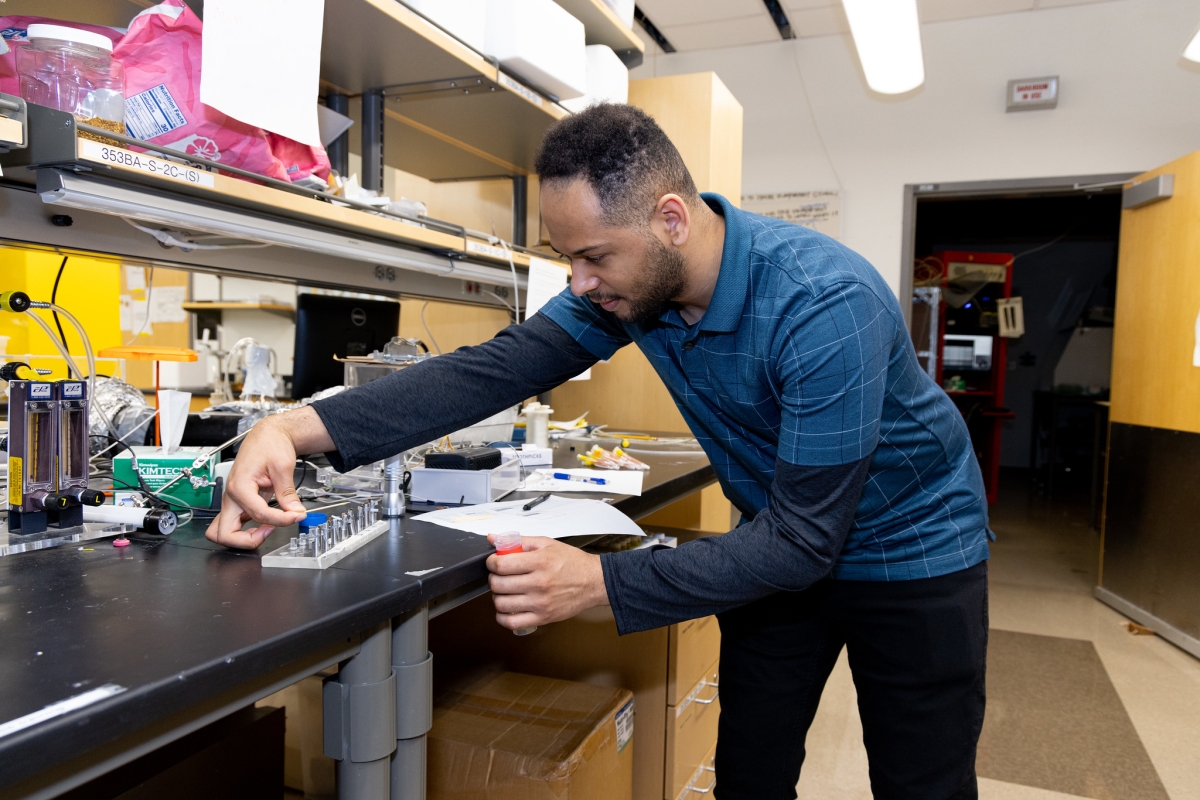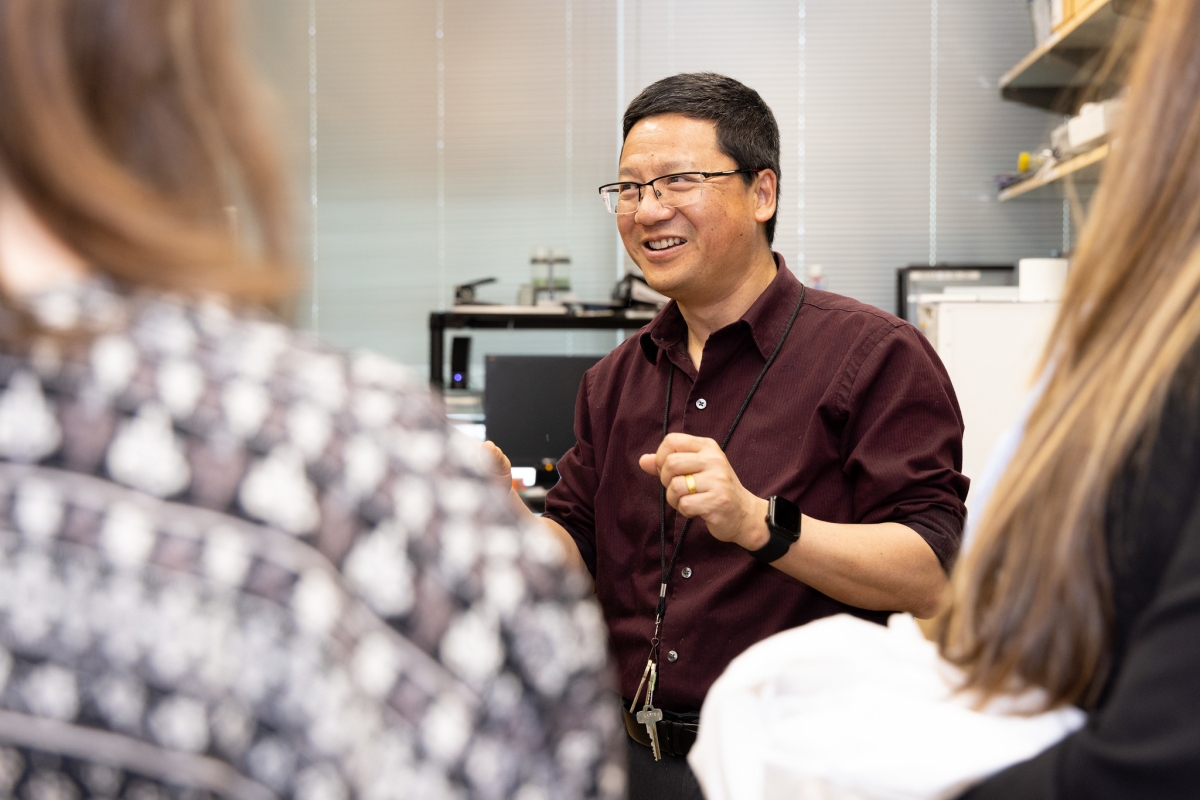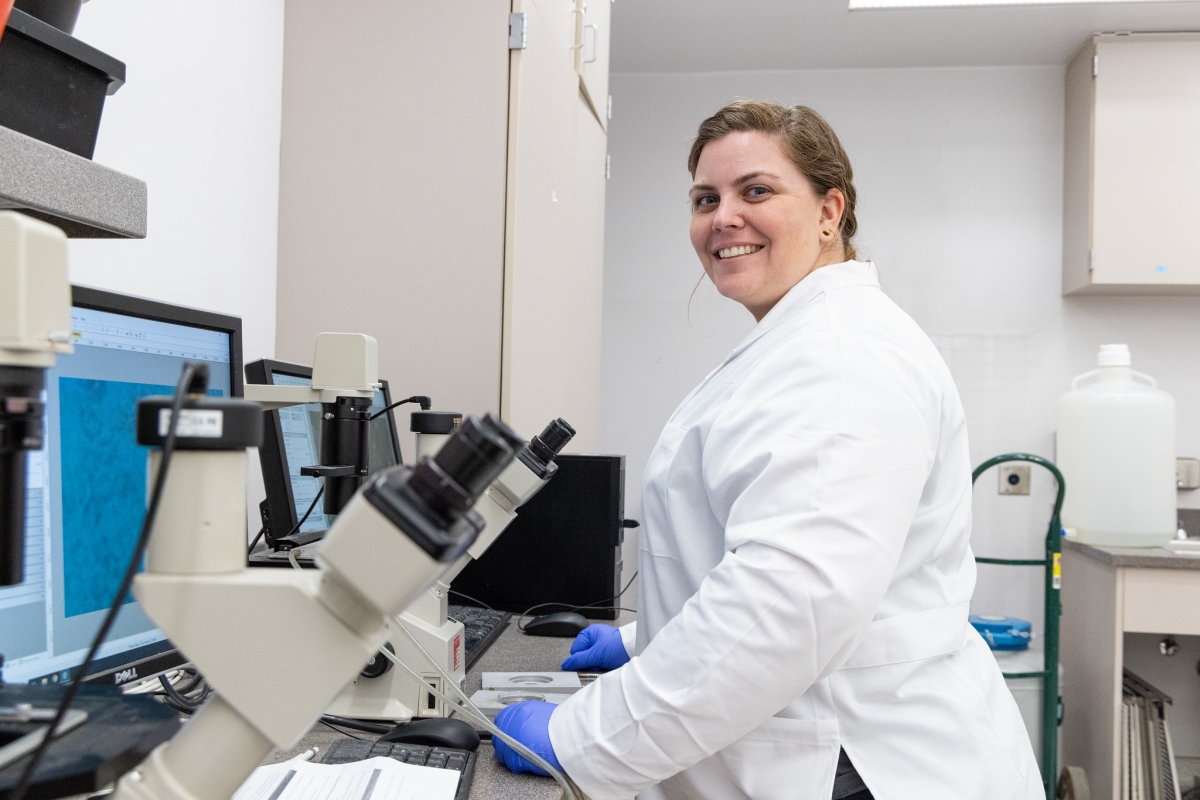Editor’s note: This story is featured in the 2023 year in review.
This Earth Month, let’s talk about bees.
We can learn a lot from the almost two million bees at Arizona State University. But we could know more if we could see inside the hive.
School of Life Sciences Research Associate Professor Hong Lei has launched a new research opportunity through the Online Undergraduate Research Scholars (OURS) program using technology that records footage from a transparent observation beehive to provide an unparalleled look inside for online students.
“I wondered how studying honeybees online would even be possible,” said Jamal Bell, who is studying biological sciences through ASU Online. “Once I saw how they conducted it with the cameras, I thought it was interesting and wanted to get that experience.”
Throughout the coursework, students developed their hypotheses and research projects centered around the different patterns and behaviors related to temperature and humidity using the captured footage. For example, Bell’s research centered around the position of the queen bee when laying her eggs.
“The students come up with so many interesting questions,” Lei said. “Questions way beyond our expectations, and I get excited by looking at the questions the students are asking and posting online about.”
As part of the hybrid experience, online students were invited to visit ASU’s Tempe campus in March for a five-day immersion experience, including visiting the university’s Bee Lab Annex, one of the largest bee labs in the United States. Many students traveled from other states or out of the country to participate in hands-on research.
“I have no lab experience because I don’t have easy access to a lab from home,” said Michelle Boutin, a biological sciences student from California. “This program allowed me to participate in research from afar with the web cameras but also with the added in-lab experience that I don’t usually get.”
Boutin tailored her research on the correlations between the external parameters of temperature and humidity with the length that honeybees travel from the hive.
“Nothing can replace physically coming to the lab and seeing the beehive in front of your eyes,” Lei said. “We are shrinking the gap between the on-campus and online students regarding the learning research experiences.”
During the week, students learned about cell culture and molecular biology and worked in labs with Lei, Assistant Teaching Professor Susan Holechek and research technologist Cahit Ozturk.
Chelsea Doop, an online biological sciences student, said her favorite part of the week was extracting bee DNA and wants to encourage others to get involved in an online research project that might interest them.
“You can still be a part of a lab. You can still do the work without feeling that something is holding you back,” Doop said. “I am a single mom of two kids from the other side of the country and can still participate. That’s the coolest thing in the world.”
Streaming the hive
The live observation hive contains nearly 14,000 honeybees in glass to protect the bees and allow students to observe them in their colonies.
A three-camera setup records 4K footage to provide clear resolution to see every detail inside the hive. Students can access footage remotely and download and view previously recorded footage stored online.
“I’ve been an educator for 30 years and this is exciting. We can finally provide research opportunities online,” educational technologist David Roman said. “These students are having a good time doing the research and learning a lot.”
Roman and his colleague Kevin Tinnin, a senior systems architect at ASU’s Research Technology Office, were instrumental in setting up the technology used for the student’s research.
“We can expand up to eight cameras and still have plenty of bandwidth,” Tinnin said. “We can use the same technology and format in other research capacities.”
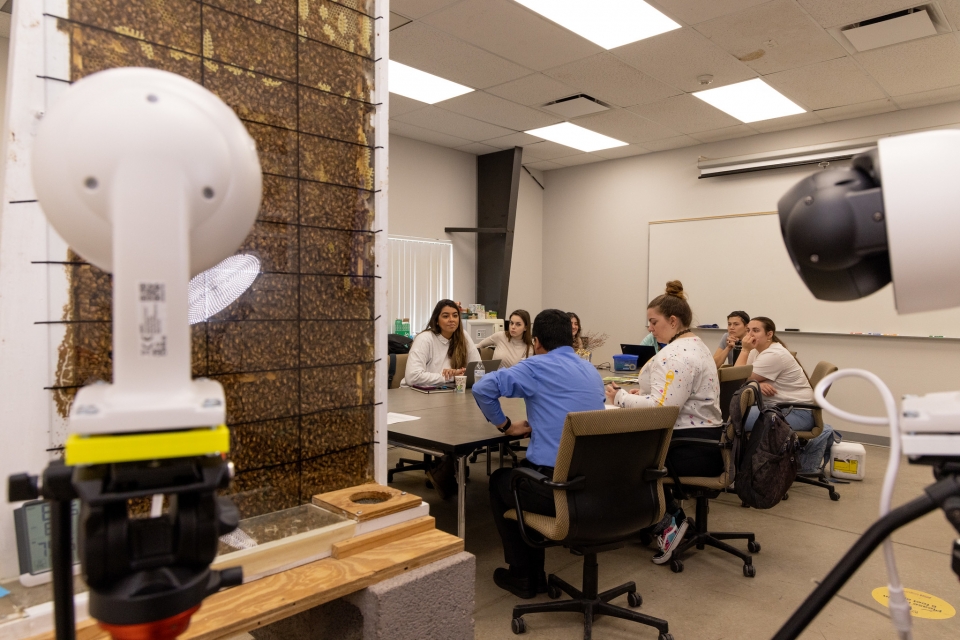
The three-camera setup records 4k footage that students can access remotely to view and download.
Why bees?
Bees are a great research model.
A colony of bees is like a superorganism; each bee in the hive acts similarly to a cell in another organism, as all the bees work together in highly organized structures, according to Lei.
Honeybees also produce invaluable products like honey, beeswax, and pollen.
In 2019, honeybees produced 157 million pounds of honey in the U.S., with an estimated value of around $159 million, according to the Food and Drug Administration.
On top of that, honeybees' pollen production accounts for $15 billion in added crop value. But the population of honeybees is declining at a dramatic rate year after year.
“We have started losing many bee hives, sometimes at rates of 30 to 40 percent every year,” Ozturk said. “So, we need to figure out how to stop this because they are a critical factor in the environment.”
That’s why bee research now and in the future is so important.
Current researchers in the Social Insect Research Group use honeybees for various research purposes, including behaviors, ecology and evolution.
As a bee lover for over 30 years and ASU’s primary beekeeper, Ozturk was excited to inspire the next generation of bee lovers, beekeepers and bee researchers.
“When I see a student – it doesn’t matter, elementary, college – they are our future potential researcher or beekeeper,” Ozturk said. “Telling them about honey bees, beekeeping and other issues we face, hopefully, we can find some help in the future.”
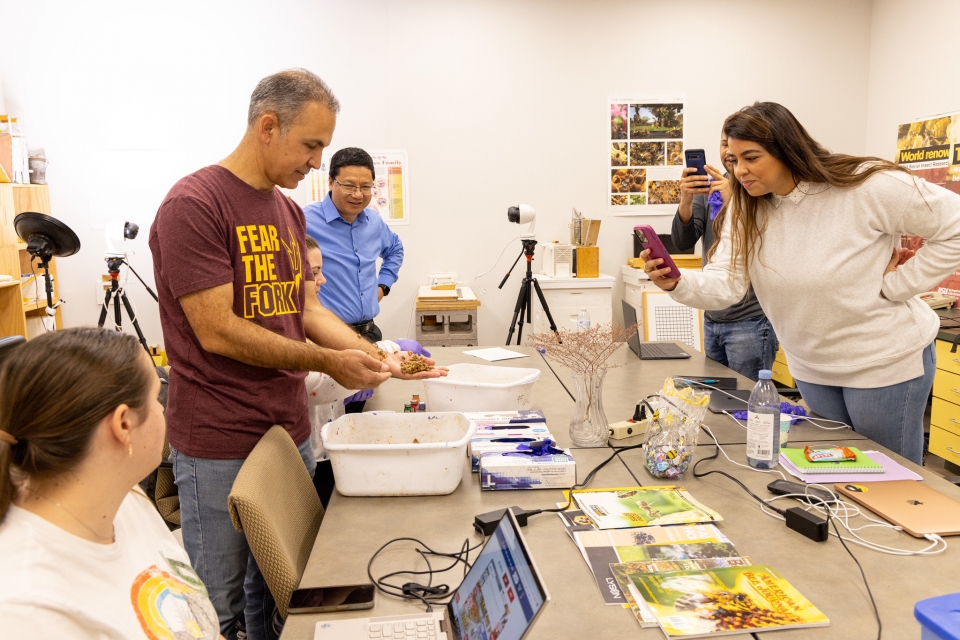
Research technologist Cahit Ozturk works with online students in ASU’s Bee Lab Annex.
Become a bee lover yourself
• Try out a class: In Queen Bee Rearing, Ozturk teaches community members about the many factors that contribute to rearing queen bees.
• Read more: The sweet side of bee research.
• Watch a movie: Movie on the Lawn: "Bee Movie" on Thursday, April 13.
Video and photos by Meghan Finnerty/ASU.
More Science and technology

ASU researcher part of team discovering ways to fight drug-resistant bacteria
A new study published in the Science Advances journal featuring Arizona State University researchers has found vulnerabilities in certain strains of bacteria that are antibiotic resistant, just…

ASU student researchers get early, hands-on experience in engineering research
Using computer science to aid endangered species reintroduction, enhance software engineering education and improve semiconductor material performance are just some of the ways Arizona State…

ASU professor honored with prestigious award for being a cybersecurity trailblazer
At first, he thought it was a drill.On Sept. 11, 2001, Gail-Joon Ahn sat in a conference room in Fort Meade, Maryland. The cybersecurity researcher was part of a group that had been invited…

